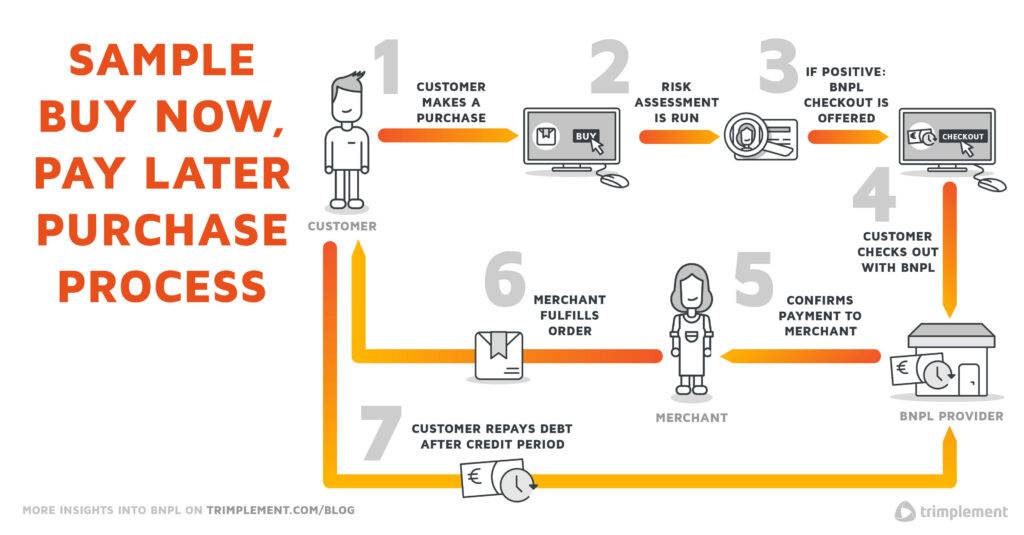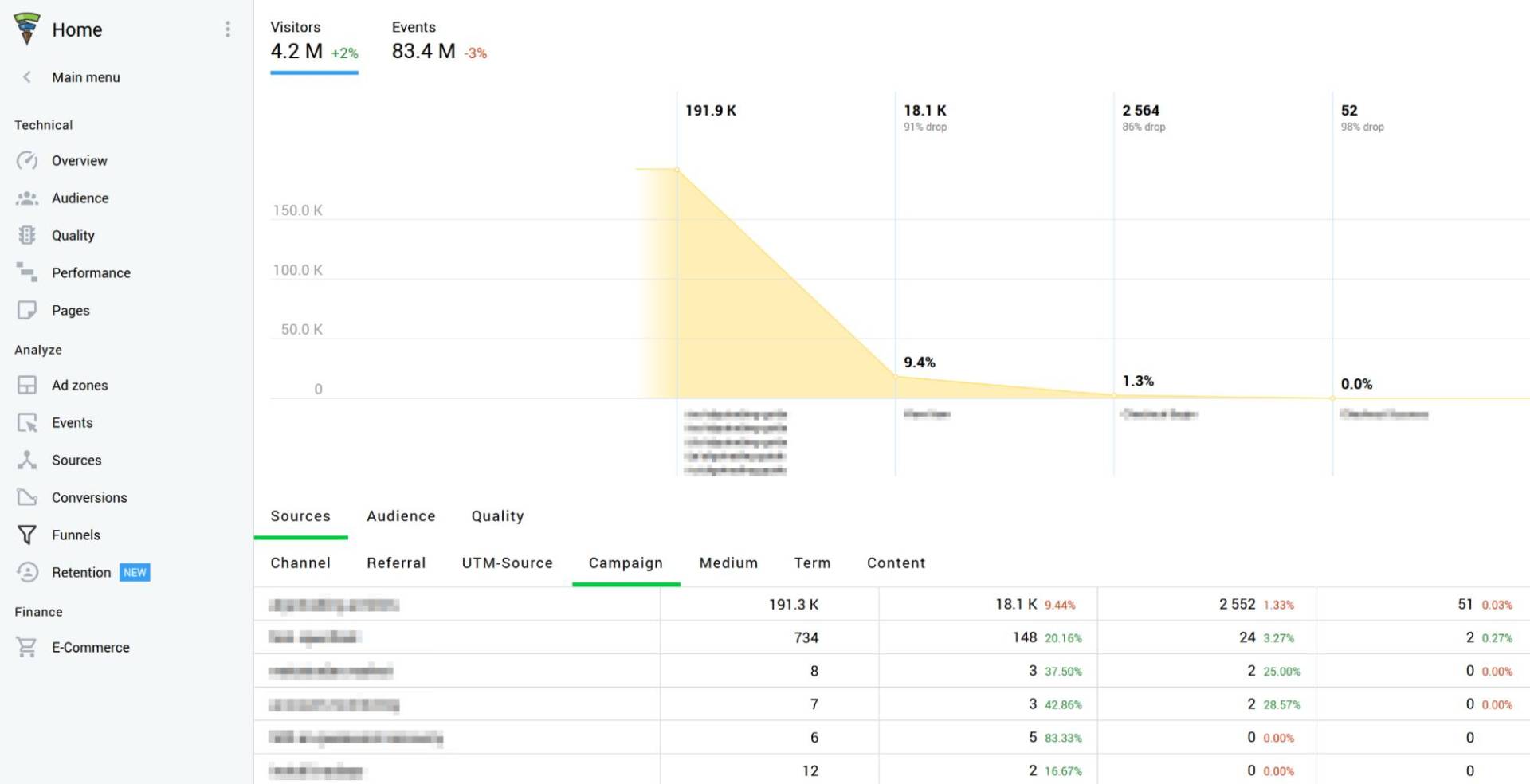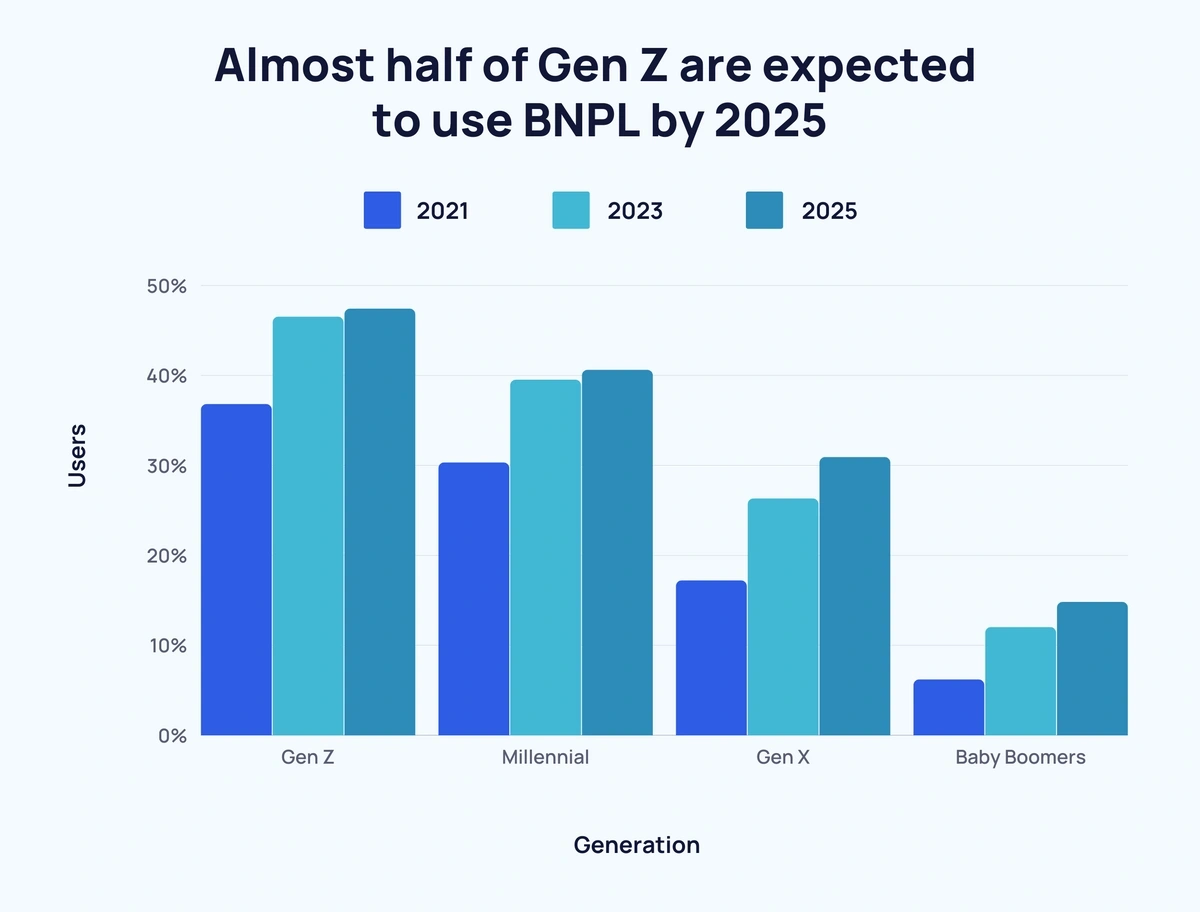Politics
How Buy-Now-Pay-Later is Changing the E-Commerce Landscape
Published
11 months agoon
By
Drew Simpson
The e-commerce landscape is constantly evolving. With more ways to access the world of online shopping than ever before, consumers continue to seek new and innovative ways to purchase their favourite products.
Buy now, pay later (BNPL) has begun to revolutionise the e-commerce industry. After being rapidly adopted as the globe’s newest preferred method of payment, BNPL platforms like Klarna and Paypal have become the go-to apps for a fuss-free omnichannel shopping experience.
In fact, a whopping 70% of buy now, pay later users claim that they would no longer opt to purchase from e-commerce stores without flexible and convenient payment options. Not only does this give brands with BNPL in place a competitive edge, but it means that smaller stores can no longer sleep on flexible financing.
The BNPL market is tipped to be worth more than $3 trillion in 2030. As the e-commerce industry prepares for another digital shift, here’s why you need to be ahead of this new financial curve.
What is Buy Now, Pay Later?
Buy now, pay later is one of the newest payment options revolutionising the e-commerce conversion process. BNPL works by splitting a customer’s payment across a number of weeks or months, depending on the payment plan they choose.
The first payment is then taken directly at checkout before the rest of the payments are taken out in further instalments.
“The payments landscape is ever-evolving. BNPL has proven to be a trusted payment method for consumers, and the demand for flexible and simple payment choices grows as additional fintechs and large corporations join the BNPL space,” says Bryce Deeney, cofounder and CEO of Equipifi. The time is now for financial institutions to determine where BNPL fits within their core product offerings and their strategic initiatives.”
(Image Source: Trimplement)
In terms of consumers, BNPL offers a wide range of benefits ranging from lower checkout fees, little to no interest rates and flexibility that no other payment service can provide. In fact, over 37% of consumers believe that BNPL is the most convenient way to pay for their online shopping.
The question is, how is it transforming the success of e-commerce retailers?
Can Retailers Use BNPL to Their Advantage?
Adding a more convenient payment system into the mix has increased e-commerce conversions tenfold. In an era of high inflation rates and more abandoned shopping carts than ever before, introducing a BNPL system to your checkout could play a key role in keeping your e-commerce store alive and kicking.
“BNPL isn’t going anywhere, but your cardholders may be. As the new year approaches and your institution evaluates your tech stack, make sure BNPL is part of the equation,” says Deeney. “Look into partners that allow for BNPL while also working seamlessly with your current technology and payment processing solutions. This will help make the transition easier for everyone involved.”
If you’re still unsure about the potential benefits of buy now, pay later, here’s how you could use flexible finance to your advantage.
Boosting Conversion Rates
Did you know that BNPL systems can boost store conversion rates by 20-30%? With the ability to split payments into several instalments, e-commerce stores with a buy now pay later scheme find that they have fewer abandoned shopping carts and a higher chance of converting leads.
If you’re aiming to increase your conversion rate, it might be time to introduce BNPL to your conversion funnel. Depending on your target audience and how likely they would be to engage with a split payment system, BNPL could grant you a competitive advantage.
The key here is to start researching your target demographic. Using an analytic tool such as Finteza, you can quickly learn more about your audience’s behaviour and identify the exact points where they drop off of the funnel. Below is the example of a funnel used to attract visitors to sign up for an affiliate program.

For example, if your largest site weak point is the checkout, it could suggest that the payment process is either tricky to access, slow loading or unaffordable. Adding a new payment option, like BNPL, into the mix could encourage a more inclusive future and influence leads to make that all-important purchase.
Using Finteza, you can quickly access audience data and segment your traffic sources into 15 basic parameters, including location, events, page addresses and even the type of device a visitor accesses from.
Gaining a wider insight into how your target consumers function could suggest whether they are likely to utilise a BNPL payment plan. With the average BNPL user aged 18-35, e-commerce stores with a much older demographic may end up shying away from a pay-later scheme.

(Image Source: Exploding Topics)
Finteza can also be used to further optimise your sales and conversion funnel before introducing a BNPL system. With the ability to spot weak points in a sales system, Finteza can draw up real-time reports in seconds, revealing where visitors are most likely to leave a site or which pages are the most susceptible to bouncing.
If you’re aiming to trial a BNPL scheme, why not test your success using an AI-generated analytic partner? Finteza, for example, can even track the number of times a mouse hovers over certain page points, which could aid you in identifying just how many consumers are interested in flexible finance.
Improving Customer Experience
Did you know that 41% of the younger generation now say that they would rather use BNPL services for all household purchases?
Buy now, pay later systems allow for a more inclusive shopping experience. Not only do platforms like Klarna and Split It pride themselves on providing financial flexibility, but they have also become the most affordable form of payment for those suffering the consequences of inflation and a cost-of-living crisis.
Introducing inclusive payment methods to your e-commerce store opens it up to more potential customers. Especially if your target audience is within a younger generation, Adding Klaran options at the checkout will ensure that your store remains in line with current high-street shopping trends alongside popular online retail platforms such as TikTok shop and ASOS.
A New Competitive Edge
According to experts at Baymard, 70% of carts are now abandoned by modern-day consumers due to a lack of preferred payment options. Implementing a buy now, pay later option could help your store solve this challenge for your target leads and become the online store they pick in a sea full of competitors.
While Klarna, PayPal and other flexible finance apps continue to dominate the BNPL landscape, it seems as if other e-commerce giants aren’t far behind with their own versions of ‘split-pay’. Amazon introduced their own buy now, pay later scheme in early 2022 for orders over £100. With other tech giants such as Apple not far behind, could flexible finance pioneer the future of online commerce?
BNPL transactions are set to exceed $680 billion by 2025, making it one of the most used payment choices across the globe in the last decade. Allowing more shoppers to complete a purchase could result in higher order values and increased conversion rates. The question is, will you step aboard the BNPL ship or simply embrace the wave?
You may like
-


Navigating a shifting customer-engagement landscape with generative AI
-


How AI assistants are already changing the way code gets made
-


Using Augmented Reality to Level up your E-Commerce Business
-


The businesses changing climate technology
-


A Pioneering Frontier and Brainchild of Technology- Hyperlocal E-commerce
-


How AI is Changing Data Management: Embracing the AI-Driven Automation Era
Politics
Fintech Kennek raises $12.5M seed round to digitize lending
Published
7 months agoon
10/11/2023By
Drew Simpson
London-based fintech startup Kennek has raised $12.5 million in seed funding to expand its lending operating system.
According to an Oct. 10 tech.eu report, the round was led by HV Capital and included participation from Dutch Founders Fund, AlbionVC, FFVC, Plug & Play Ventures, and Syndicate One. Kennek offers software-as-a-service tools to help non-bank lenders streamline their operations using open banking, open finance, and payments.
The platform aims to automate time-consuming manual tasks and consolidate fragmented data to simplify lending. Xavier De Pauw, founder of Kennek said:
“Until kennek, lenders had to devote countless hours to menial operational tasks and deal with jumbled and hard-coded data – which makes every other part of lending a headache. As former lenders ourselves, we lived and breathed these frustrations, and built kennek to make them a thing of the past.”
The company said the latest funding round was oversubscribed and closed quickly despite the challenging fundraising environment. The new capital will be used to expand Kennek’s engineering team and strengthen its market position in the UK while exploring expansion into other European markets. Barbod Namini, Partner at lead investor HV Capital, commented on the investment:
“Kennek has developed an ambitious and genuinely unique proposition which we think can be the foundation of the entire alternative lending space. […] It is a complicated market and a solution that brings together all information and stakeholders onto a single platform is highly compelling for both lenders & the ecosystem as a whole.”
The fintech lending space has grown rapidly in recent years, but many lenders still rely on legacy systems and manual processes that limit efficiency and scalability. Kennek aims to leverage open banking and data integration to provide lenders with a more streamlined, automated lending experience.
The seed funding will allow the London-based startup to continue developing its platform and expanding its team to meet demand from non-bank lenders looking to digitize operations. Kennek’s focus on the UK and Europe also comes amid rising adoption of open banking and open finance in the regions.
Featured Image Credit: Photo from Kennek.io; Thank you!
Radek Zielinski
Radek Zielinski is an experienced technology and financial journalist with a passion for cybersecurity and futurology.
Politics
Fortune 500’s race for generative AI breakthroughs
Published
7 months agoon
10/11/2023By
Drew Simpson
As excitement around generative AI grows, Fortune 500 companies, including Goldman Sachs, are carefully examining the possible applications of this technology. A recent survey of U.S. executives indicated that 60% believe generative AI will substantially impact their businesses in the long term. However, they anticipate a one to two-year timeframe before implementing their initial solutions. This optimism stems from the potential of generative AI to revolutionize various aspects of businesses, from enhancing customer experiences to optimizing internal processes. In the short term, companies will likely focus on pilot projects and experimentation, gradually integrating generative AI into their operations as they witness its positive influence on efficiency and profitability.
Goldman Sachs’ Cautious Approach to Implementing Generative AI
In a recent interview, Goldman Sachs CIO Marco Argenti revealed that the firm has not yet implemented any generative AI use cases. Instead, the company focuses on experimentation and setting high standards before adopting the technology. Argenti recognized the desire for outcomes in areas like developer and operational efficiency but emphasized ensuring precision before putting experimental AI use cases into production.
According to Argenti, striking the right balance between driving innovation and maintaining accuracy is crucial for successfully integrating generative AI within the firm. Goldman Sachs intends to continue exploring this emerging technology’s potential benefits and applications while diligently assessing risks to ensure it meets the company’s stringent quality standards.
One possible application for Goldman Sachs is in software development, where the company has observed a 20-40% productivity increase during its trials. The goal is for 1,000 developers to utilize generative AI tools by year’s end. However, Argenti emphasized that a well-defined expectation of return on investment is necessary before fully integrating generative AI into production.
To achieve this, the company plans to implement a systematic and strategic approach to adopting generative AI, ensuring that it complements and enhances the skills of its developers. Additionally, Goldman Sachs intends to evaluate the long-term impact of generative AI on their software development processes and the overall quality of the applications being developed.
Goldman Sachs’ approach to AI implementation goes beyond merely executing models. The firm has created a platform encompassing technical, legal, and compliance assessments to filter out improper content and keep track of all interactions. This comprehensive system ensures seamless integration of artificial intelligence in operations while adhering to regulatory standards and maintaining client confidentiality. Moreover, the platform continuously improves and adapts its algorithms, allowing Goldman Sachs to stay at the forefront of technology and offer its clients the most efficient and secure services.
Featured Image Credit: Photo by Google DeepMind; Pexels; Thank you!
Deanna Ritchie
Managing Editor at ReadWrite
Deanna is the Managing Editor at ReadWrite. Previously she worked as the Editor in Chief for Startup Grind and has over 20+ years of experience in content management and content development.
Politics
UK seizes web3 opportunity simplifying crypto regulations
Published
7 months agoon
10/10/2023By
Drew Simpson
As Web3 companies increasingly consider leaving the United States due to regulatory ambiguity, the United Kingdom must simplify its cryptocurrency regulations to attract these businesses. The conservative think tank Policy Exchange recently released a report detailing ten suggestions for improving Web3 regulation in the country. Among the recommendations are reducing liability for token holders in decentralized autonomous organizations (DAOs) and encouraging the Financial Conduct Authority (FCA) to adopt alternative Know Your Customer (KYC) methodologies, such as digital identities and blockchain analytics tools. These suggestions aim to position the UK as a hub for Web3 innovation and attract blockchain-based businesses looking for a more conducive regulatory environment.
Streamlining Cryptocurrency Regulations for Innovation
To make it easier for emerging Web3 companies to navigate existing legal frameworks and contribute to the UK’s digital economy growth, the government must streamline cryptocurrency regulations and adopt forward-looking approaches. By making the regulatory landscape clear and straightforward, the UK can create an environment that fosters innovation, growth, and competitiveness in the global fintech industry.
The Policy Exchange report also recommends not weakening self-hosted wallets or treating proof-of-stake (PoS) services as financial services. This approach aims to protect the fundamental principles of decentralization and user autonomy while strongly emphasizing security and regulatory compliance. By doing so, the UK can nurture an environment that encourages innovation and the continued growth of blockchain technology.
Despite recent strict measures by UK authorities, such as His Majesty’s Treasury and the FCA, toward the digital assets sector, the proposed changes in the Policy Exchange report strive to make the UK a more attractive location for Web3 enterprises. By adopting these suggestions, the UK can demonstrate its commitment to fostering innovation in the rapidly evolving blockchain and cryptocurrency industries while ensuring a robust and transparent regulatory environment.
The ongoing uncertainty surrounding cryptocurrency regulations in various countries has prompted Web3 companies to explore alternative jurisdictions with more precise legal frameworks. As the United States grapples with regulatory ambiguity, the United Kingdom can position itself as a hub for Web3 innovation by simplifying and streamlining its cryptocurrency regulations.
Featured Image Credit: Photo by Jonathan Borba; Pexels; Thank you!
Deanna Ritchie
Managing Editor at ReadWrite
Deanna is the Managing Editor at ReadWrite. Previously she worked as the Editor in Chief for Startup Grind and has over 20+ years of experience in content management and content development.
